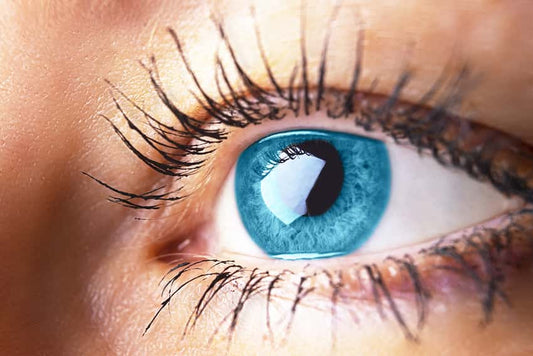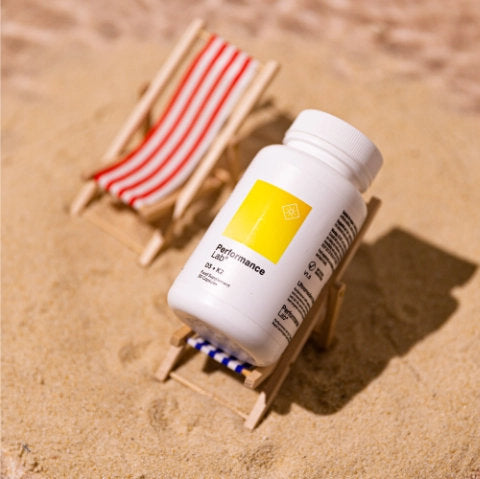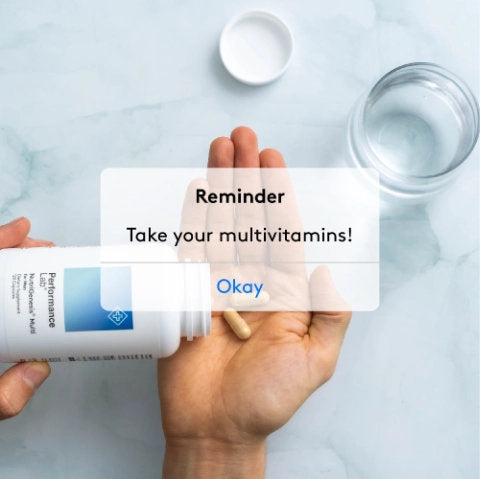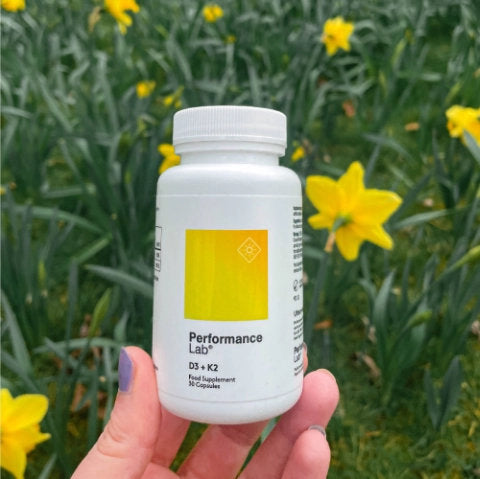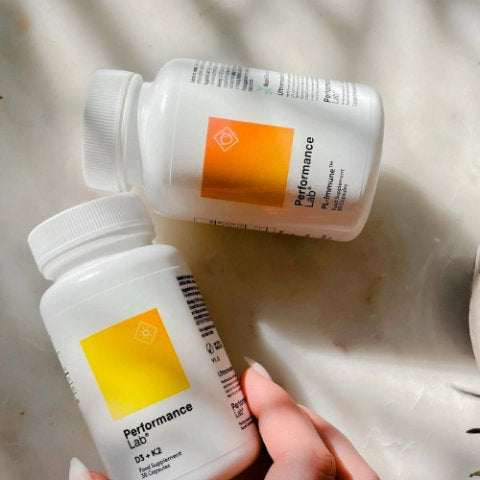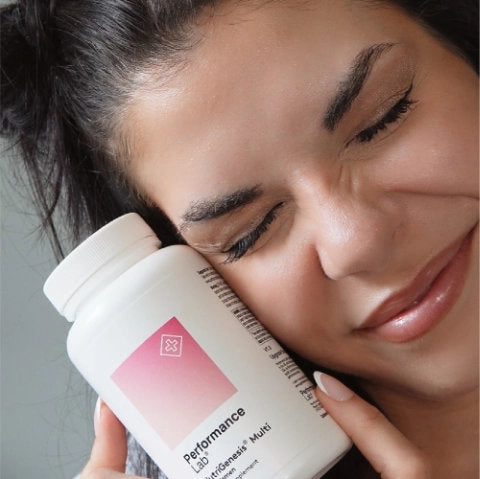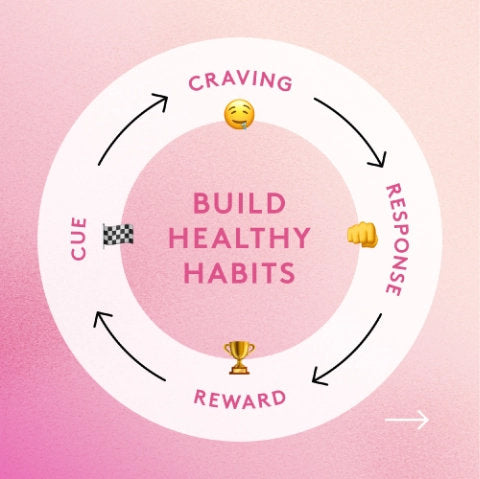The body requires a certain balance of macro and micronutrients to function optimally, and when those levels tip towards either end of the scale, it can cause problems.
Now, for vitamins that the body can produce endogenously, it's not so much of a concern, but it spells trouble for the ones that must be obtained through diet.
And when it comes to eyes, maintaining eye health and proper vision largely depends on adequate nutrient intake.
Read on as we give you a rundown of the most popular vitamins for eye health, why they're beneficial, and how deficiencies may contribute to adverse outcomes for eye health.
What Causes Dry Eyes?
The eyes have three main sources of lubrication:
- Lacrimal glands in the upper outer quadrant of the eye; it's the gland that produces tears when you cry or if an irritant gets into your eye
- Glands embedded in the conjunctiva that produce water and mucus
- Glands at the edge of the lids that produce an oily substance
This mix of water, mucus, and oil from the glands of the conjunctiva and the edge of the lids are what makes up the tear film on the eye surface.
Dietary intake can directly or indirectly influence tear film composition, thus inducing changes to the ocular surface 1.
Dry eye syndrome (DES) is usually the result of changes to the tear film that can arise from aqueous deficiencies or increased evaporation rate 1. However, some other factors contribute to dry eyes. These include:
- Aging
- Medications
- Underlying conditions (thyroid, diabetes, autoimmune, Sjögren's syndrome, etc.)
- Environmental conditions
- Contact lenses
- Electronic device screens
But there is some research to suggest that certain nutrient deficiencies can also cause dry eyes and damage to the eyes.
Left untreated, dry eye disease can damage corneal epithelial cells, including keratosis and exfoliation, which can lead to symptoms like pain and photophobia.
Related Post: Can Vitamin Deficiency Cause Dry Eyes?
Oxidative Stress and Inflammation
There's scientific evidence to suggest that high levels of inflammation and oxidative stress can contribute to dry eye disease.
As well, a deficiency of things like essential fatty acids and antioxidants can increase inflammation and decrease the stability of the tear film and health of the conjunctival surface 2.
Here's how:
When the body is in a state of low antioxidant status combined with excessive free radicals, there's a significantly increased risk of ocular damage because of the body's inability to neutralize harmful oxygen species; the ratio of free radicals to antioxidants is tipped in favor of the radicals.
An excess of free radicals attacks the cell's plasma membrane and can cause cell damage or cell death.
Not only this, but they also damage the epithelial tissues of the conjunctiva, the lacrimal glands, and tear-secreting tissues 3, which causes malfunction and a decreased production of compounds that make up the tear film.
However, increasing intake of powerful antioxidants like vitamin C, E, lutein and zeaxanthin, and others boosts antioxidant defenses and may help fight against free radicals. You might be interested in learning more about fruits like bilberry for eyes as a natural source.
Key Vitamins For Eye Health
Vitamin A
Vitamin A is one of the most well-known vitamins for vision because of its role in night vision.
However, where dry eyes are concerned, vitamin A is of particular importance because of its role in ocular surface epithelium growth and turnover 1.
Dry eyes and blurry vision are one of the first signs of a vitamin A deficiency. Research shows that in individuals with vitamin A deficiency, the ocular surface present with corneal keratinization, which may cause severe impairment of vision quality. Supplementing with vitamin A can generally cause a reversal of this condition.
Other research suggests that deficiency of vitamins A, C, and E reduces goblet cells in the conjunctiva and a significant decrease of microvilli and microplicae in the conjunctiva and cornea 4.
Vitamin E and C
One of the main functions of vitamin E in the body is to act as an antioxidant to protect cells against free radical damage.
Because fats are an integral part of all cell membranes and are highly vulnerable to damage by reactive oxygen species (ROS), the function of α-tocopherol is to attack free radicals and prevent a chain reaction of lipid oxidation that can cause severe damage to the eyes 5.
Given that the retina is highly concentrated with fatty acids, high antioxidant intake becomes critical to protecting vision and maintaining eye health.
Similarly, vitamin C acts as an antioxidant, but it also acts to regenerate vitamin E after it has neutralized a free radical to allow it to continue eliciting its protective action.
A 2016 study of the relationship between antioxidants and eye health suggests that adequate intake of antioxidants like vitamin C, E, and astaxanthin are required to maintain proper vision and reduce oxidative damage.
Astaxanthin inhibits cell viability loss and increases in ROS; vitamin C is an established protective natural antioxidant, and vitamin E protects the retina against injury by reducing the formation of ROS 3.
Deficiency: Multiple studies have demonstrated that chronically low vitamin C levels are linked to a significant risk of several chronic diseases, including heart disease, cancer, eye diseases, and neurodegenerative conditions 6.
Specifically, mitochondrial oxidative damage in the lacrimal gland causes lacrimal dysfunction and can cause dry eye disease 7.
When it comes to vitamin E and dry eyes, there isn't much research to back up that a deficiency directly contributes to dry eyes.
However, one study does suggest that supplementation with vitamin C and E may play a role in improving ocular surface milieu 8.
B Vitamins
The B vitamins play an essential role in all sorts of biological processes in the body.
But when it comes to ocular health, the B vitamins help reduce inflammation and maintain normal levels of homocysteine; when homocysteine accumulates, it can wreak havoc on the body, most notably the vascular system, which may subsequently affect the retina.
Specifically, vitamins B6, B12, and B9 (folate) are critical to reducing homocysteine levels through its conversion to cysteine and methionine.
One study showed that oral B1 and cobalamin (B12) supplementation improved various symptoms of dry eye disease such as dryness, foreign body sensation, and photophobia, as well as improved stability of the tear film 9.
Essential Fatty Acids
Essential fatty acids are a class of essential fats that cannot be synthesized by the body and must be obtained through dietary intake or supplementation.
While EFAs are traditionally thought of regarding brain function, they're also highly beneficial for ocular health.
Gamma-linolenic acid (GLA), a molecule synthesized from linoleic acid, possesses anti-inflammatory actions and is converted into dihomo-gamma-linolenic acid (DGLA).
Both GLA and DGLA are anti-inflammatory, and research has shown that they can reduce inflammation of the ocular surface in patients with Sjögren's Syndrome (SS) dry eye 10.
Omega-3 fatty acids, on the other hand, specifically EPA and ALA, also possess anti-inflammatory and anti-aggregatory actions. They produce anti-inflammatory eicosanoids like PGE3 to reduce inflammation and return tissues to homeostasis 1.
One specific study found that daily supplementation of 224mg of LA and 30mg of GLA helped increase tear levels of PGE1, an eicosanoid with anti-inflammatory properties, after just one month of supplementation 10.
By the end of treatment, symptoms of dry eye and corneal fluorescein staining were also improved.
Key Takeaways
There is limited conclusive evidence to suggest that specific vitamin deficiencies are associated with dry eyes.
Still, based on available research, it appears that inadequate intake of certain nutrients, antioxidants in specific, can contribute to the formation of ROS that damage the surface of the eyes and reduce the tear film.
If you're looking to avoid this, supplementing with an antioxidant-rich eye health product like Performance Lab Vision ensures you're fulfilling your daily requirement.
If you want to go a step further, stack it with Performance Lab Omega-3 and Performance Lab NutriGenesis Multi to cover your bases from every angle.
References
- P Aragona, L Rania, A Micali, et al. Nutrition and Dry Eye. Curr Ophthalmol Rep. 2013; 1: 58-64.
- S Patel, J Plaskow, C Ferrier. The influence of vitamins and trace element supplements on the stability of the pre-corneal tear film. Acta Ophthalmol (Copenh). 1993;71(6):825-829.
- JY Huang, PT Yeh, YC Hou. A randomized, double-blind, placebo-controlled study of oral antioxidant supplement therapy in patients with dry eye syndrome. Clin Ophthalmol. 2016;10:813-820.
- T Amemiya. The Eye and Nutrition. Nippon Ganka Gakkai Zasshi. 1999;103(12):829-850.
- HM Rasmussen, EJ Johnson. Nutrients for the aging eye. Clin Interv Aging. 2013;8:741-748.
- RA Jacob, G Sotoudeh. Vitamin C function and status in chronic disease. Nutr Clin Care. 2002;5(2):66-74.
- Y Uchino, T Kawakita, M Miyazawa, et al. Oxidative stress induced inflammation initiates functional decline of tear production . PLoS One. 2012;7(10):e45805.
- V Peponis, S Bonovas, A Kapranou, et al. Conjunctival and tear film changes after vitamin C and E administration in non-insulin dependent diabetes mellitus. Med Sci Monit. 2004;10(5):CR213-CR217.
- X Ren, Y Chou, X Jiang, et al. Effects of Oral Vitamin B1 and Mecobalamin on Dry Eye Disease. J Ophthalmol. 2020;2020:9539674.
- P Aragona, C Bucolo, R Spinella, S Giuffrida, G Ferreri. Systemic omega-6 essential fatty acid treatment and pge1 tear content in Sjögren's syndrome patients. Invest Ophthalmol Vis Sci. 2005;46(12):4474-4479.




